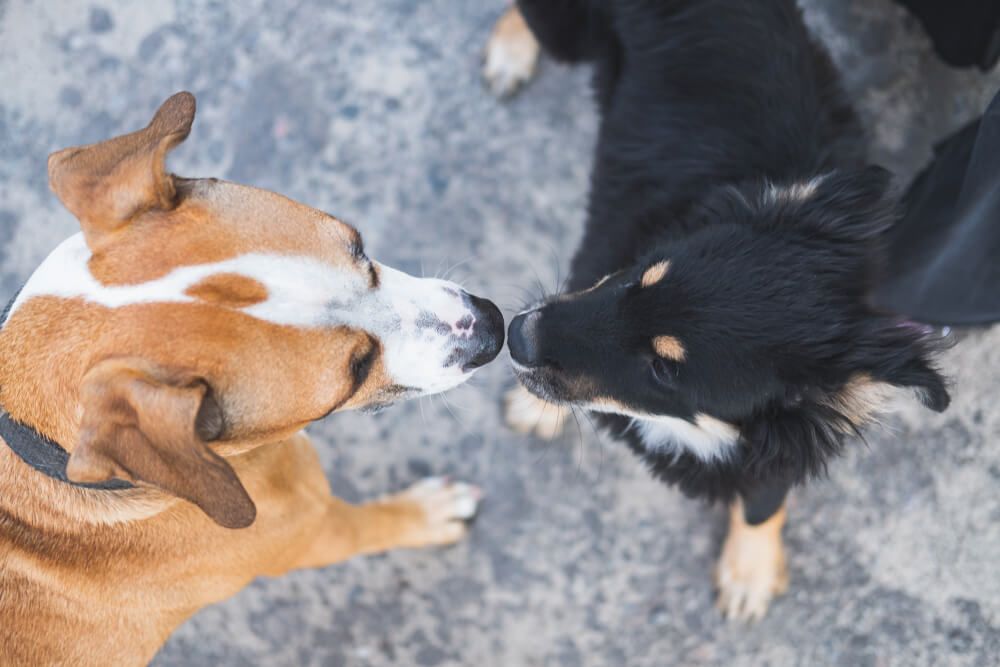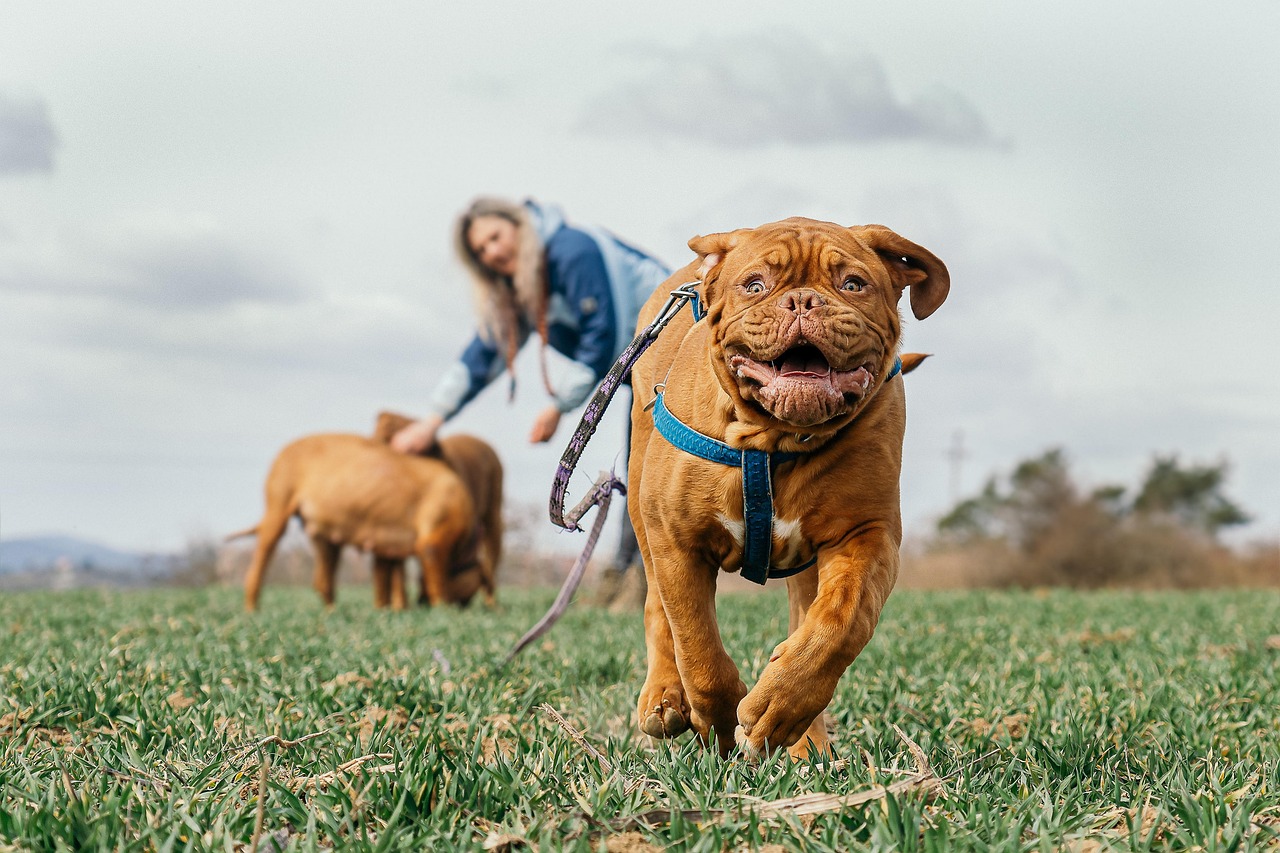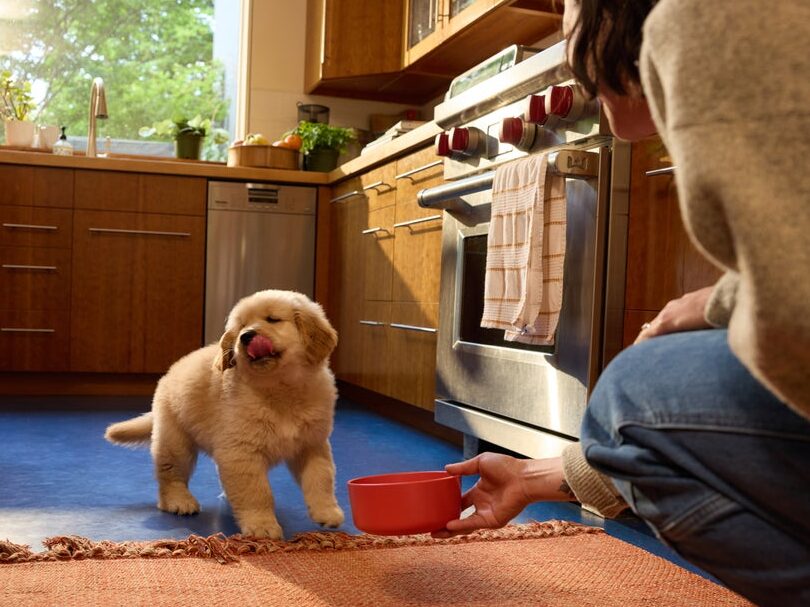Hey Ollie blog readers! We’re offering you an exclusive 60% OFF your starter box! Try now!
Even though you love your dog, sometimes it’s hard to remember that not every person on the planet is a “dog person.” Whether you have a super-friendly pup that wants to run up to every stranger at the park or an aggressive pooch that barks wildly around new people, properly navigating human encounters is important—especially during a global pandemic. “Not everybody has the opportunity to be raised with a dog, so they may not understand that your dog running towards them is a sign of excitement,” says Certified Professional Dog Trainer Siri Zakaras, owner of Life’s Trail Dog Training in Park City, Utah. “Plus, there are cultural difference to consider. In some cultures, dogs are used for working or protection, and in some countries, dogs are not pets. Not everyone understands dogs as well as people who have dogs.”
Given that your dog has likely taken a break from tons of human interaction this year, now is the perfect time to dial in training for when things eventually go back to normal. “Once we get back to socialization and outings, your pet should behave properly when seeing other people,” says Certified Professional Dog Trainer Khara Schuetzner, who owns The Doggie Spot in Shawnee, Oklahoma, and serves as board chair for the Association of Professional Dog Trainers (APDT). “You don’t want your dog to be dragging you on leash to greet others or barking mad when seeing things that are different.”
How to Train Recall, aka “Come!”
People-loving dog breeds will try to greet everyone on the street unless trained not to. Although letting dogs run free is tempting in places with open areas, you really shouldn’t take them off-leash until they fully understand what “come” means, Zakaras says, because that establishes bad behaviors from the get-go. You also don’t want to have to retrieve your pet in close proximity to a stranger given Covid-19 risks and the need for social distancing. If your dog hasn’t mastered “come” yet, below are some Do’s and Don’ts for how to train this important foundational behavior.
• DO: Keep your dog’s name positive. As early as possible in your dog’s life, use her name in a positive way. “If I’m negatively yelling it constantly, they think it means something negative,” Zakaras says. “You have to make a positive association with their name so that when they hear it, they think good things happen.” Zakaras practices with dogs at home by saying their name in a high-pitched “dolphin voice” (read: excited) so they know they’re getting praise. As soon as they look at her, she rewards the behavior with a treat. Try not to call your dog for anything unpleasant—such as nail clipping, bathing, or having his leash clipped on to go home from the park—because that will give her pause next time you call her.
• DON’T: Call your dog if you’re not sure he will come. “All recalls should be successful recalls,” Schuetzner says. “Work at your dog’s level: If he has a Kindergarten-level recall, don’t give him a graduate assignment like being called away from a cat in a tree.”
• DO: Make a recall happen if your dog won’t. If you call your dog and he ignores you, “Run over to him and put a treat in front of his nose, backing up as you get his attention so he follows you,” Schuetzner says.
• DON’T: Repeat the cue. Resist the urge to call over and over, Schuetzner advises. “It only teaches your dog to tune out the cue. Call once and, if necessary, change your tone and pitch, say ‘puppy, puppy,’ clap your hands, or make the recall happen.”
• DO: Offer a worthwhile reward. To get your dog to come to you, offer something better than the stranger or tree she is distracted by, like high-value treats or toys that are worth her while. “Use extra yummy treats—no dry biscuits here!—or a well-thrown ball, if that is your dog’s fancy,” Schuetzner says. Also, make yourself more interesting: “Clap, whistle, squat, throw your arms out, and cheer your dog in: ‘Great, great, faster, you can do it…’ When she arrives, makes sure to grab her collar or do a touch, then spill the treats or throw the ball. If appropriate, release her to go back to whatever she was up to.”
Mastering recall lays the groundwork for behaving well around strangers. Being able to maintain your dog’s focus offers another level of security—especially for ones that are afraid of or skittish around new people. “You want to redirect your dog’s attention before they go down the tunnel of fixation on a person,” Zakaras says. When you are about to encounter someone, use a high-value treat and make your dog sit and just chew on it as that person walks past. “This might mean you have to step off the path so that you feel comfortable, because every emotion we have trickles down the leash—if you’re on edge, your dog’s on edge, and they get more amped feeling like they need to protect what’s happening,” she says. Hold a treat and let the dog gnaw on it so that they start to make a cognitive connection with when they see a person, they get a treat.
“Owners should teach their dog to ignore people,” Schuetzner says. She suggests the “look at that” game. Stand at a distance when your pup looks at the stranger, mark with “yes,” clicker, “good boy/girl” and reinforce (treat, toy, or whatever motivates your pup).
If you want to give your dog extra space but he’s not quite ready to be unattached, consider a 15-30-foot long leash. It’s a great alternative to get the exercise and smelling freedom he needs while still giving you the ability to reel him in if necessary. And if you’re struggling to get your dog to respond to your teachings, consider getting outside help—APDT’s Locate-a-Trainer online feature can help you find a certified trainer in your area.
The Ollie blog is devoted to helping pet parents lead healthier lives with their pups. If you want to learn more about our fresh, human-grade food, check out MyOllie.com.
Tagged As:

The nutrition your dog needs,
the food they want.

Enjoying our articles? Subscribe our Newsletters and get new articles directly to your inbox
You might also like
23 September 2025
6 MINS READ
Back to School: Training Your Dog at Any Age
As we hit back-to-school season rolls around, it’s not just kids who benefit from sharpening their skills and learning something new—our dogs can, too! Training isn’t limited to puppies or p…
by Ollie Pets
23 September 2025
7 MINS READ
Lace Up and Leash Up: A Beginner’s Guide to Running with Your Dog
Running is one of the simplest ways to stay active, and it’s even better with a canine companion. Not only does running with your dog keep you both in great shape, it also strengthens your bond …
by Ollie Pets
13 May 2025
8 MINS READ
Puppy Training Guide & Behavior Timeline
Bringing home a puppy is pure magic. It’s also pure chaos—tiny teeth, zoomies, accidents in the house, and moments that make you wonder if you’re raising a future genius or a tiny tornado. …
by Ollie Pets







